The Lowdown
Even though the Xiaomi 14 isn’t technically available for purchase in the United States, it has so much to offer for those who want to break out of the standard Samsung and Pixel as flagships rut. It’s just too bad that T-Mobile is the only carrier willing to allow its users to fully experience it.
Overall
Pros
- Compact size
- Premium build quality
- Latest flagship Snapdragon processor
- Gorgeous, flat display
- Excellent cameras
- Fast charging
- IP68 dust and water resistance
Cons
- Not technically available in the United States, but it shows as fully compatible with the T-Mobile network
Not everyone wants to wrangle a larger smartphone, so it’s always nice to find a slightly smaller flagship, like the Xiaomi 14, that doesn’t feel like a compromise. It boasts all the bells and whistles, including a top-of-the-line processor, a stunning AMOLED display with a dynamic refresh rate, super thin bezels around the display, all-day battery life with fast wired and wireless charging, and an IP68 dust and water resistance rating. Xiaomi’s partnership with photography icon Leica is also a 14 feature, with its Summilux optical lenses, 75mm floating telephoto lens, and Leica photo tuning. Intrigued? Well, let’s dig in!
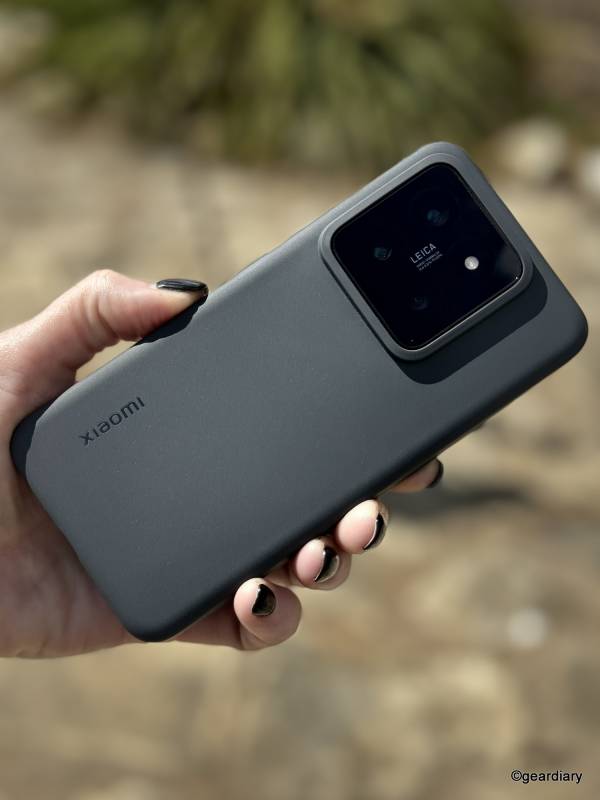
If you live in the United States and are unfamiliar with Xiaomi (pronounced shau·mee), that’s not surprising. Though Xiaomi hasn’t officially expanded its reach into the US, its products are “present in more than 100 countries and regions around the world” and include a wide range of consumer electronics, including smartphones, smart home devices, wearables, and other gadgets.
Founded in 2010, Xiaomi is a prominent Chinese technology company known for offering quality products at competitive prices. In fact, Xiaomi is now the third-largest smartphone manufacturer in the world, only behind Samsung and Apple.
The Xiaomi 14 is the smallest of the brand’s latest flagship smartphone series, which also includes two slightly larger models, each with 6.73″ displays: the 14 Pro, a Chinese market-only release, and the 14 Ultra, a global release specifically aimed at photography enthusiasts.
With its 6.36″ display, the Xiaomi 14 is great for those who want a premium smartphone experience, albeit in a slightly smaller, more pocket-friendly package.
Even though the Xiaomi 14 might technically be the “least loaded” of the three 14 series models, it still offers a satisfying array of flagship features, including the latest Snapdragon 8 Gen 3 processor, a dynamic Dynamic 1 to 120Hz display, up to a 240Hz touch sampling rate, Dolby Vision, stereo speakers with Dolby Atmos, IP68 dust and water resistance, and more that we’ll dig into shortly.
The Xiaomi 14 is available in two configurations using the latest LPDDR5X + UFS 4.0 storage. You can start with a generous 12GB RAM and 256GB storage or get even more room for your media files with the 12GB RAM and 512GB storage option. The 14 is available in Jade Green, White, and Black. Each version has an aluminum frame and a glass back.
Unboxing the Xiaomi 14
The box includes the Xiaomi 14, a USB Type-A to Type-C charging cable, a 90W EU fast charger, a protective case, a SIM tool, a Quick Start Guide and Warranty Card, and a Safety Information pamphlet. The 14 also has a factory-applied screen protector, which I always appreciate.
Xiaomi 14 Walk-Around
The Xiaomi 14 measures 6.025″ tall by 2.83″ wide by 0.337″ thick (0.488″ at the camera module), and it weighs 6.8 ounces. It feels like a solidly built little beast with a flat display that tapers ever-so-slightly on the very edges into the straight aluminum frame around it.
The 14 has a 6.36″ AMOLED low-temperature polycrystalline oxide (LTPO) display so that you can expect smooth and responsive scrolling. With nice and slim bezels all the way around, a 20:9 aspect ratio, and a resolution of 2670 x 1200 pixels with 460 pixels per inch (ppi), you’ll enjoy crisp and detailed visuals on a device with a brilliant display.
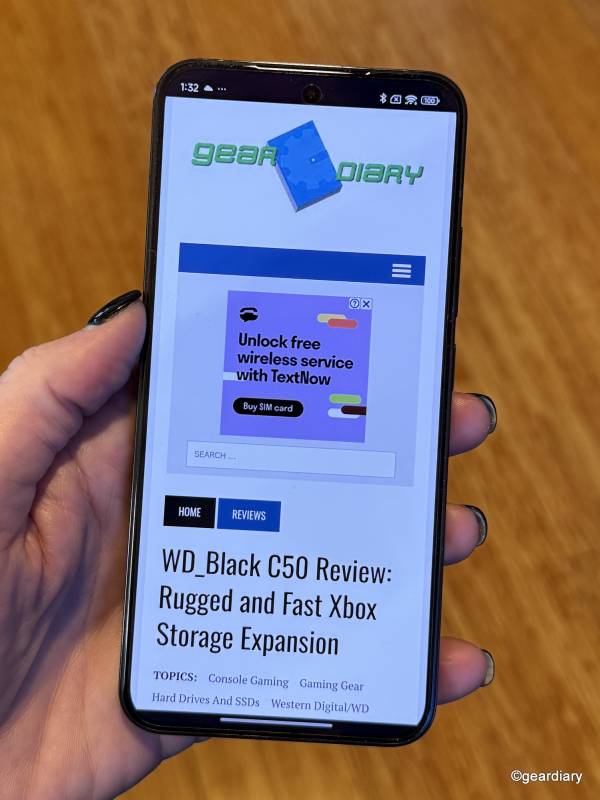
The display’s LTPO technology and AdaptiveSync Pro give you a dynamic refresh rate ranging from 1Hz to 120Hz. This capability ensures you’ll get the best refresh rates and performance on apps that need them while conserving battery life by lowering the refresh rate on apps that don’t.
The 240Hz touch sampling rate improves the display’s responsiveness, which is important when gaming.
The dynamic refresh and touch sampling rates put the Xiaomi 14 on par with other flagships, including the Samsung Galaxy S24 series, the OnePlus 12, the OPPO Find X7 series, and (most likely) the Google Pixel 8 series, although Google doesn’t publicize that information.
At the top of the Gorilla Glass Victus-covered glass display, there is an ear speaker that combines with the bottom speaker for a better-than-expected stereo sound. The 32-megapixel punch-hole selfie camera is centered underneath.
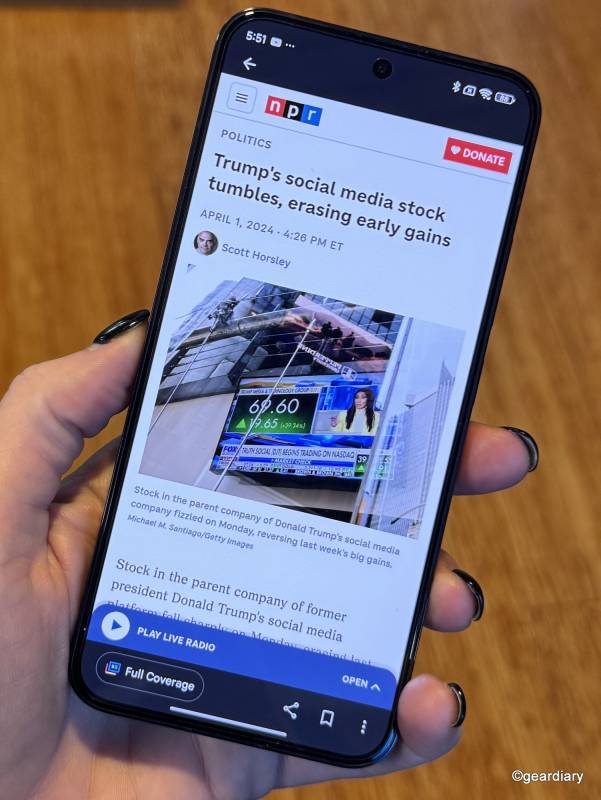
The selfie camera has a pixel size of 0.7 micrometers, which allows it to capture detailed shots. It also has an f/2.0 aperture and a 5P lens (5P refers to the number of lens elements), contributing to an 89.6º wide-angle capability; it is also capable of dynamic framing between 0.8X and 1X zoom, and it includes Night and Portrait modes.
The Xiaomi 14’s display can achieve a peak brightness of 3000 nits, with a typical brightness of 1000 nits in High Brightness Mode (HBM), which means the display is easy to see, even when you’re outside and under the sun’s full glare.
The power button and volume rocker are on the Xiaomi 14’s right side, between two antenna bands; the straight edges of the shiny gray aluminum frame are more apparent in this photo. It’s more than a little iPhone-esque, but I don’t think that’s bad.
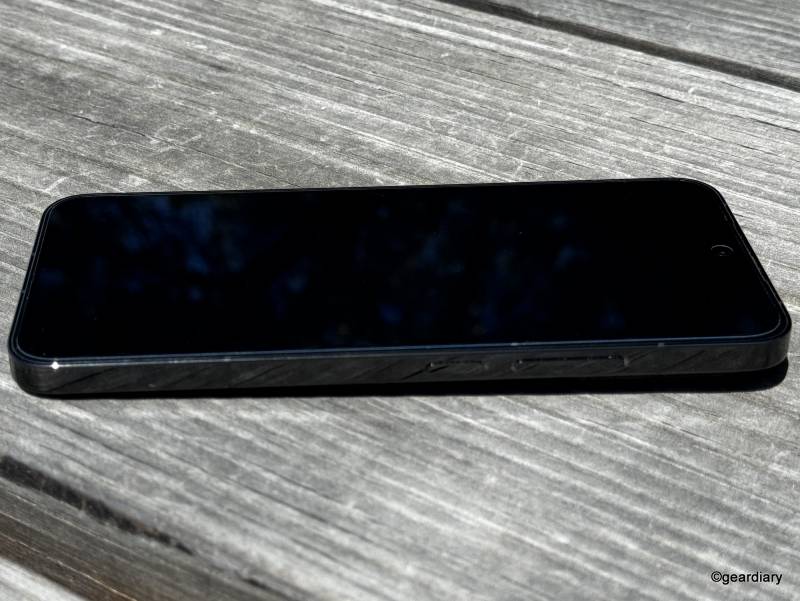
The top is clean, besides the two antenna bands near each corner.
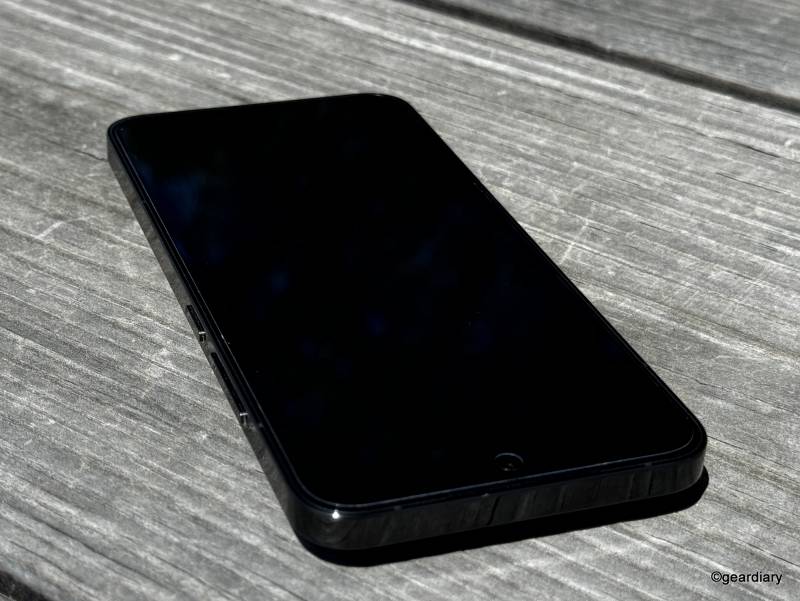
There is a single antenna band on the left side.
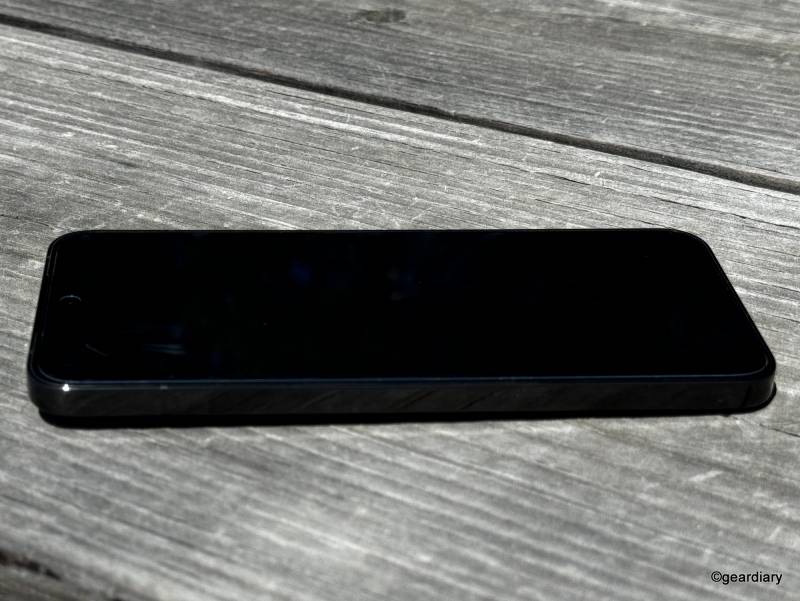
The dual SIM tray, a microphone, the USB Type-C port centered between two antenna bands, and a speaker are on the bottom. Using an eSIM is also an option in the Settings for two lines.

The black version’s 3D curved glass back has a really nice matte finish, which is great because it doesn’t show fingerprints or grubby smears as easily as a shiny glass back would.
The shiny glass covering the softly curved square making up the camera module contrasts nicely with the matte back; the ring around the module is slightly textured, adding visual appeal if you look closely enough.
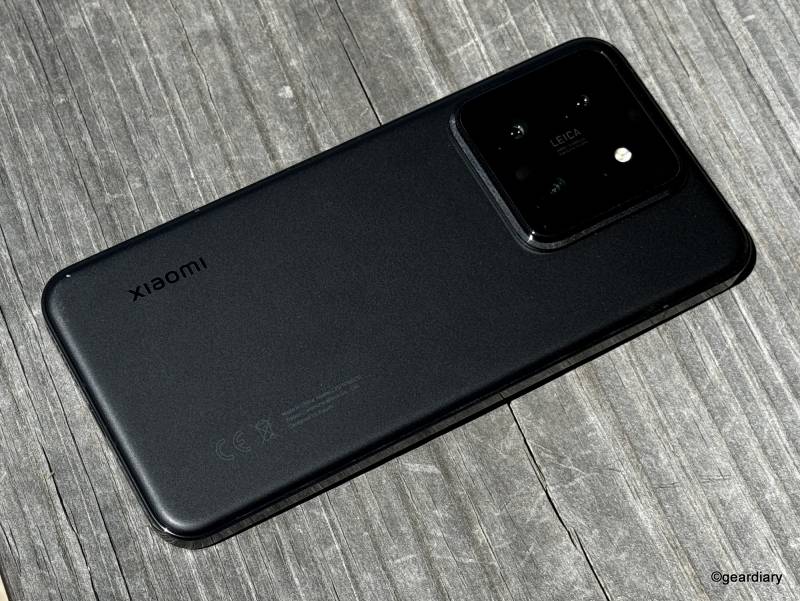
The Xiaomi 14 Cameras
Leica and Xiaomi have been partnering since 2022 to bring “exceptional imaging quality, the classic Leica image look, and unlimited creative freedom” to Xiaomi flagships, beginning with the Xiaomi 12 series. As you can see in the photo below, the Xiaomi 14 features a LEICA VARIO-SUMMILUX 1:1.6-2.2/14-75 ASPH lens system.
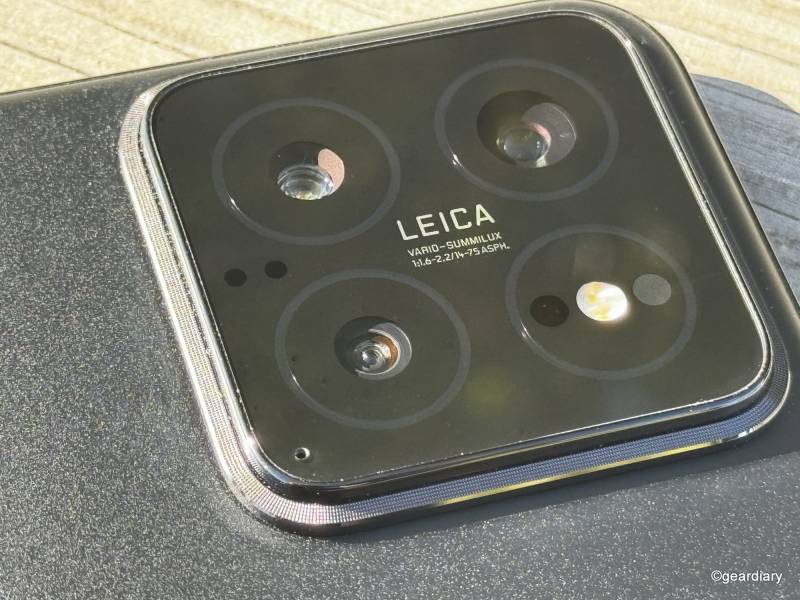
The main camera is a 50-megapixel 23mm f/1.6 wide-angle Leica lens powered by Xiaomi’s custom Light Fusion 900 image sensor. This sensor offers a 13.5 exposure value (EV), high dynamic range (HDR), and native 14-bit color depth. The lens has a 7P design and is capable of 8K video recording while also supporting Dolby Vision videos of up to 4K at 60 fps.
The Xiaomi 14 also includes a 75mm f/2.0 Leica floating telephoto camera with a 50/32-megapixel (total/effective) telephoto camera sensor for enhanced zooming. The telephoto lens has an f/2.0 aperture and a 6P lens configuration.
If you’re unfamiliar with a floating lens system in cameras, it helps keep images sharp and clear across different distances. It also reduces color distortion and other imperfections, especially in low light. This system also stabilizes the lens so you can get sharper images, which is supposed to be helpful if shooting while moving.
Finally, the Xiaomi 14 also has a 50-megapixel 14mm f/2.2 Leica ultra-wide camera. This lens has a field of view (FOV) of 115° for capturing landscapes or group shots.
Photos Taken with the Xiaomi 14
When you first use the 14’s camera, you’ll be offered the choice of two photographic styles, Leica Authentic Look and Leica Vibrant Look. There’s also a master-lens system with preset options such as 35mm Black and white, 50mm Swirly bokeh, 75mm Portrait, and 90mm Soft focus so that you can get creative with your shots.
You’ll also have the option of adding the Xiaomi/Leica branded watermark at the bottom of photos; I used it on some of these so you could see what it looks like.
Despite not being the Xiaomi 14 Ultra model that’s aimed specifically at photographers, the Xiaomi 14’s cameras do an excellent job in just about every situation. I was really impressed with how it did in lower or poor-lighting situations.
Processor Speeds
The Xiaomi 14 is powered by the Snapdragon 8 Gen 3 Mobile Platform, which is built using a 4nm power-efficient manufacturing process and incorporates advanced technology for even better performance and efficiency.
It also has a Qualcomm Adreno GPU for graphics rendering so that you can expect smooth gaming and multimedia experiences. The Snapdragon X75 5G Modem-RF System provides reliable and high-speed 5G connectivity for fast data transfer and low latency.
The Xiaomi 14 uses LPDDR5X RAM and UFS 4.0 storage technology for memory and storage. Both versions of the 14 offer 12GB RAM with a 6GB RAM expansion by default for a total of 18GB RAM, and the phone is available with either 256GB or 512GB storage.
Under the Memory Extension setting, you can turn it off or add up to 8GB of additional RAM for a total of 20GB RAM as long as your phone has enough storage space available to free up the extra memory.
- 6GB RAM Expansion is on by default.
- You can turn RAM Expansion off or adjust the amount offered.
- I now have 20GB RAM.
This fast RAM and sufficient storage combination ensures snappy performance and quick app loading times.
I haven’t hit a single lag or slow-down while using the Xiaomi 14, even with many apps running in the background, and it has handled all of my games exactly as expected. But honestly, I expected that since it uses the current top-of-the-line Snapdragon processor.
Battery Life
I’ve also been pleasantly surprised by the Xiaomi 14’s battery life. These days, most flagships will come with 5,000mAh or larger batteries, but the 14’s 4,610 mAh battery has been a trouper.
It’s safe to say that unless you watch hours of videos at full brightness and with the volume up or are playing games much of the time, you should be able to get through a full day’s use with battery life to spare.
When it’s time to recharge, you can use up to 50W wireless charging or up to 90W wired charging. Xiaomi says that using their 90W Hyper Charge (wired wall charger), you can expect a full charge in just 31 minutes, and using the optional Xiaomi 50W HyperCharge wireless charger, it will get a full charge in 36 minutes.
I couldn’t use the EU wall charger that came with the Xiaomi 14, but it seemed to charge plenty fast with the OnePlus charger and cable. I also charged it using the OnePlus 50W wireless charger, and though it didn’t charge at 50W, I have no complaints.
The 14 also offers reverse wireless Qi charging, which might be handy if you need to top off your earbuds while out and about.
Using the Xiaomi 14
The Xiaomi 14 can be unlocked with a PIN, pattern, or password, or by placing a finger on the under-display reader (up to five fingerprints can be registered), using face unlock (up to two faces can be registered), or via Bluetooth when you are wearing “selected wearable devices made by Xiaomi” (like the new Xiaomi Smart Band 8 Pro, which you can get for under $60 on AliExpress.)
I have to say that while the face unlock works just fine, it’s less secure than a fingerprint on Android phones, and most banking apps won’t accept it anyway, so I wound up using the under-display fingerprint reader most of the time. It didn’t feel like a hardship because the fingerprint sensor is blazingly accurate and fast, albeit slightly lower on the display than I’d like.
Even though the Xiaomi 14 is an unlocked phone that isn’t tied to any carrier, there’s still a fair amount of bloatware present that you will likely want to delete. Much of it is Xiaomi’s own apps, which are redundant for those of us who use Google apps, almost all of which are already loaded and ready to use.
As you just saw, fresh out of the box, there are also many preinstalled third-party apps, including Booking.com, Amazon, Amazon Music, AliExpress, Netflix, Facebook, and a few more.
One can’t help but wonder how much these apps have to pay for smartphone manufacturers to include them, but they are all easy enough to delete if you don’t already use them.
One handy feature you might use is the built-in IR blaster, which is great for controlling the TV or other electronics when you can’t find the remote or don’t want to get up and grab it. The remote is right there on your phone, which is quite handy.
The Xiaomi 14 runs Android 14 with the Xiaomi HyperOS overlay, which offers many personalization options without making the phone seem bloated or laggy. You can personalize the fingerprint reader’s effects, notification effects, icon size, and the always-on display; there are some interesting animated and still wallpaper choices if you don’t already have a photo that you’d like to use, a large number of downloadable themes, and more to explore.
One of the unexpected things that delighted me while reviewing my first Xiaomi device, the Mi 11 Lite 4G (which ran MIUI 12 as an overlay on Android 11), was the unique way the overlay displayed a little explosion when removing apps from the screen.
I know it’s a little thing, but it still makes me smile, especially when I delete some of the included apps I had no intention of using.
You know what also makes me smile? This powerful little smartphone arrives with screen and body protection right out of the box. There’s no need to order a protector or case unless you want something fancier, and your phone is protected from head to toe on day one.
Finally, as you’ll find on the iPhone, there is a separation between notifications and quick settings; you’ll get your notifications by swiping down on the left side and the quick settings by swiping down on the right side. If you aren’t used to this, it will take a minute to get used to it.
But once you do, you may just come to appreciate this type of system.
Should You Buy the Xiaomi 14?
The Xiaomi 14 is an excellent, smaller-sized smartphone that you can use in the US, but only if you are on the T-Mobile network. It is not approved or recognized by AT&T Verizon, so that’s something to be aware of. I ran my IMEI through T-Mobile’s BYOD checker, which shows it as fully compatible with that network.
That’s … disappointing, to say the least.
Even though the Xiaomi 14 isn’t technically available for purchase in the United States, it has so much to offer for those who want to break out of the standard Samsung and Pixel as flagships rut. It’s just too bad that T-Mobile is the only carrier willing to allow its users to experience it.
If you’re on T-Mobile and ready to try something different, I don’t think you can go wrong with the Xiaomi 14; it is that impressive.
The Xiaomi 14 sells for €999 (about $1082); it is available directly from the manufacturer (outside of the US) and other retailers, including Amazon and AliExpress.
Source: Manufacturer supplied review sample
What I Like: Compact size; Premium build quality; Latest flagship Snapdragon processor; Gorgeous, flat display; Excellent cameras; Fast charging; IP68 dust and water resistance
What Needs Improvement: Not technically available in the United States, but it shows as fully compatible with the T-Mobile network

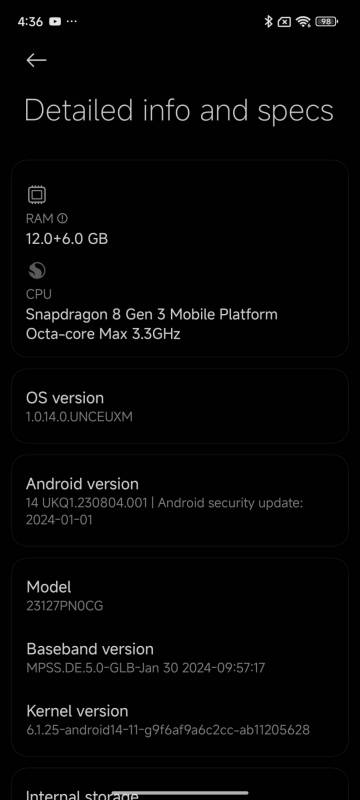
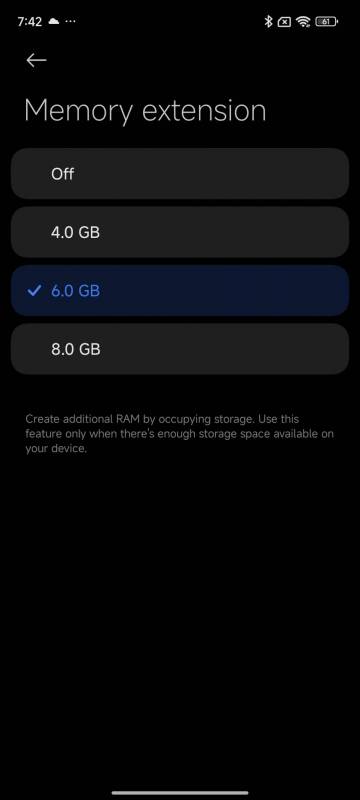
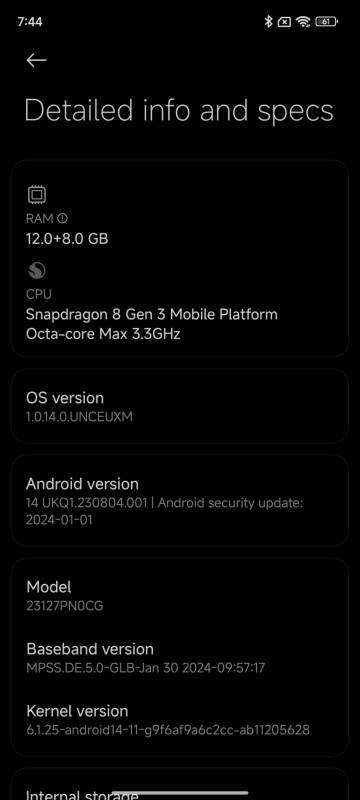
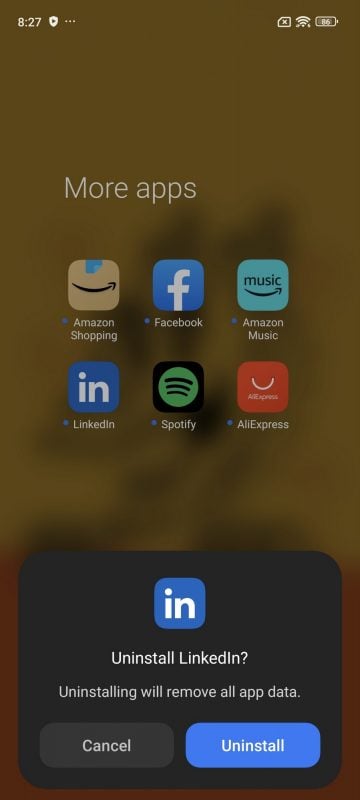

Be the first to comment on "Xiaomi 14 Review: A Perfectly Pocketable Flagship Smartphone"